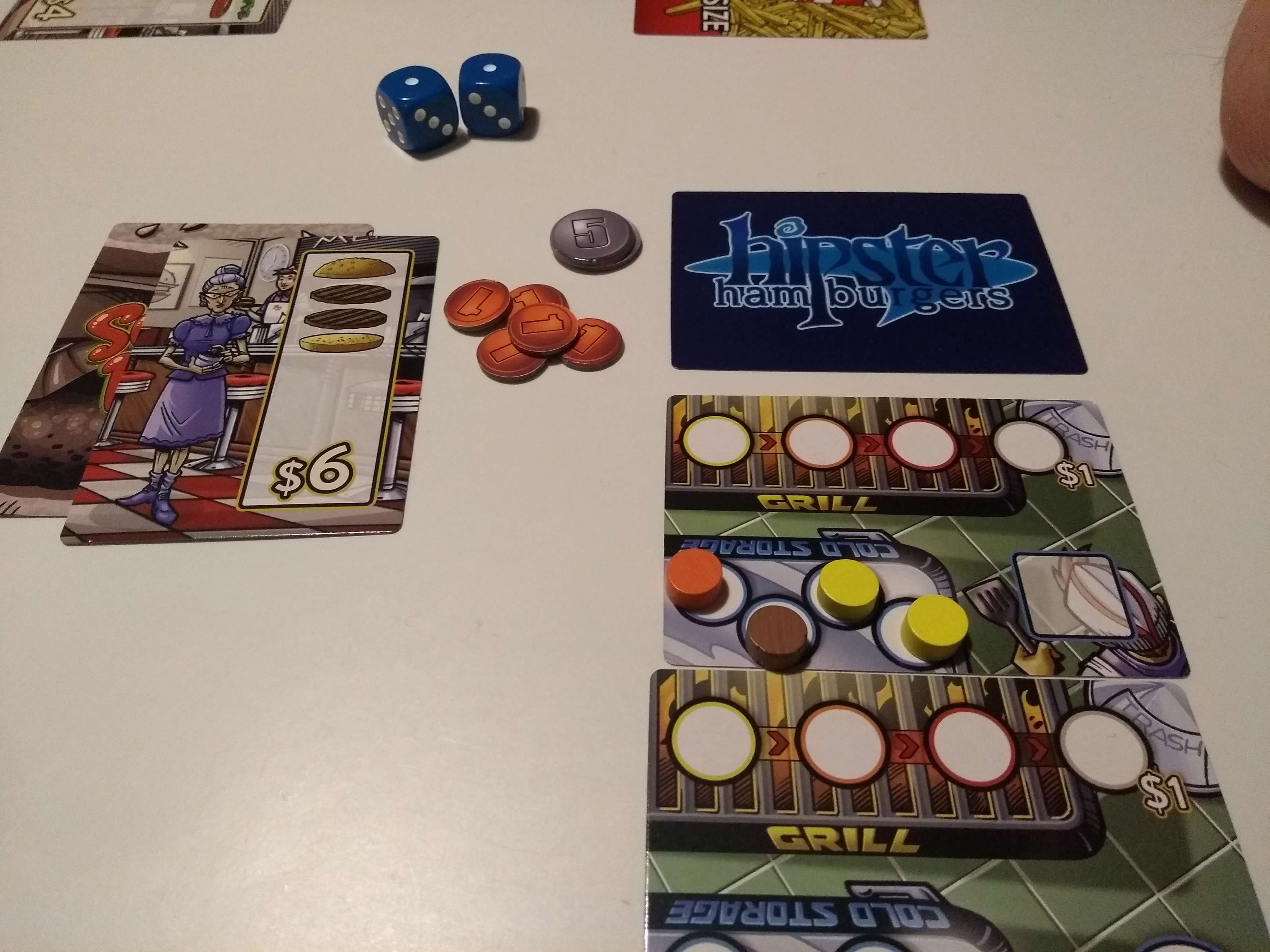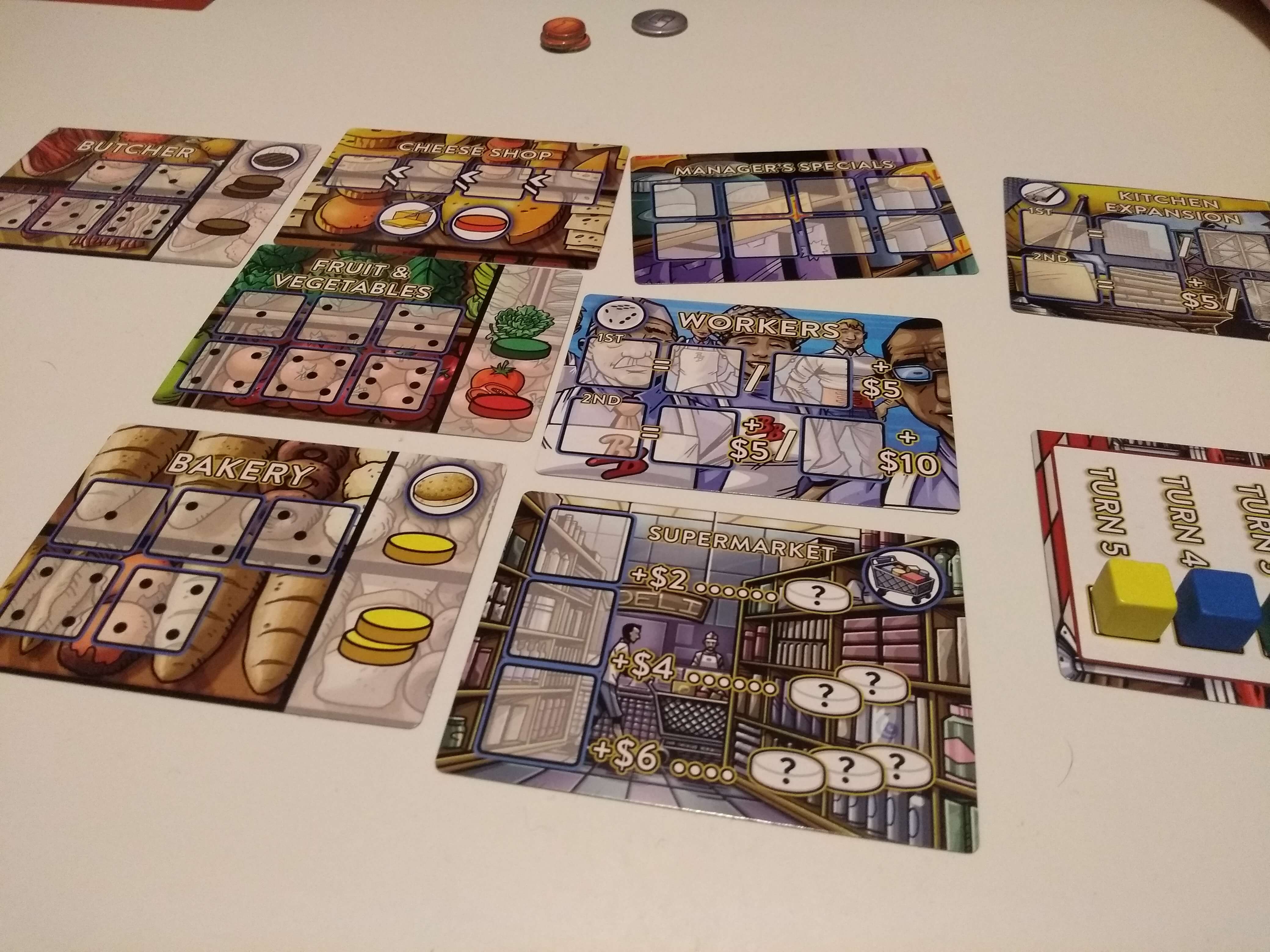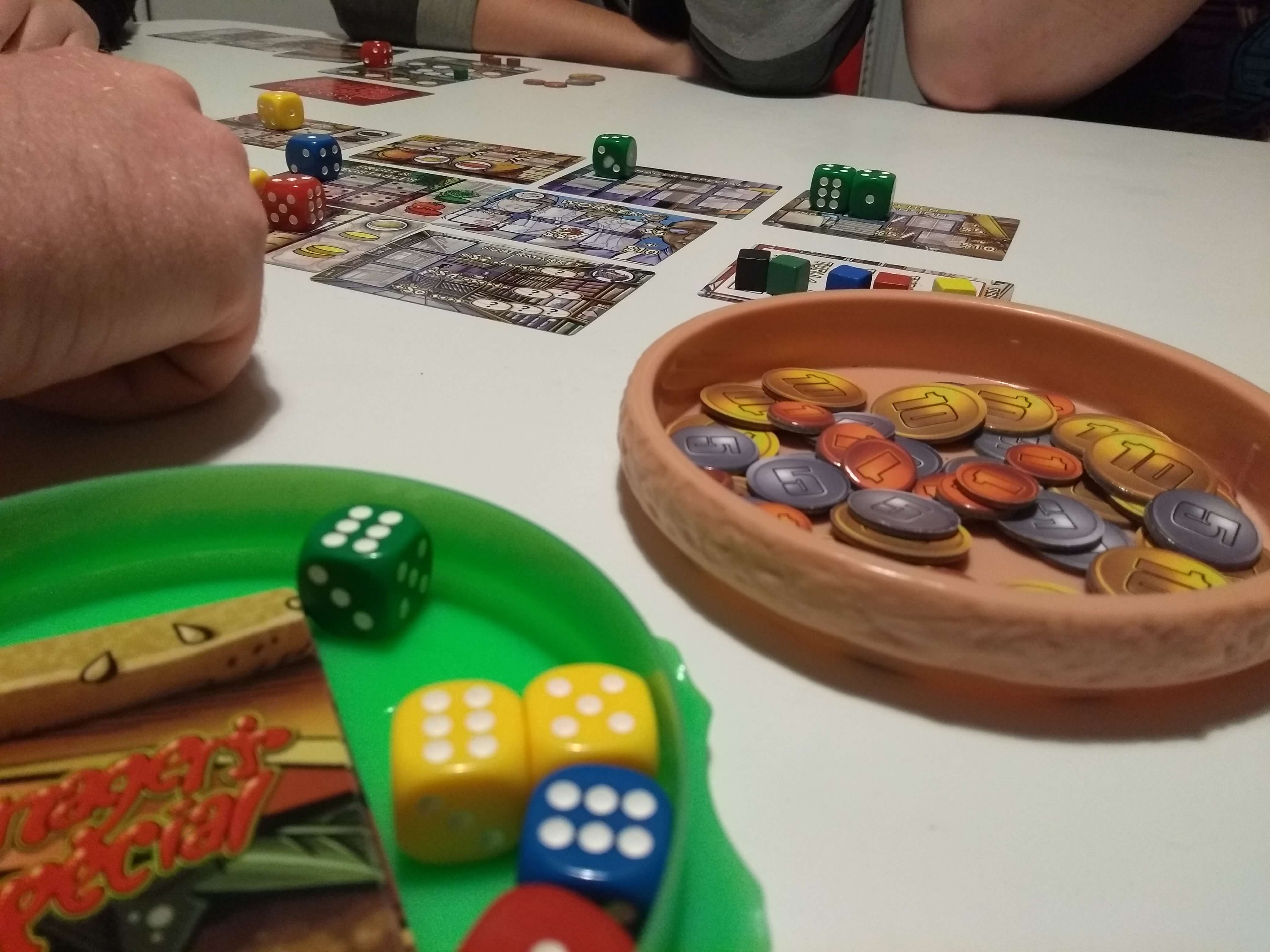Burger Boss review — Running your own burger stand
I am a sucker for food-themed games in any form, but especially when they come in a giant burger container. Burger Boss is one of these games — a burger-themed, workplace-management game where every piece sits inside the layers of a giant burger! Burger Boss challenges you to open the best burger joint around while you compete for customers and manage your grill.
Overview
In Burger Boss, you manage loads of components that are part of a restaurant. You need to pick workers to go shopping for ingredients and others to cook in your restaurant. Each worker is represented by a die and, depending on what you roll on the die, can do various activities. Specific numbers can get into specific shops, which give you various different ingredients. Your worker, regardless of the number, can also work in the kitchen or pick up a special card for your menu.
You have a bunch of customers who are hungry for their specific orders, but you need to be able to create their order before any other kitchen produces it. These customers also won’t wait forever — they will continue down the line and end up leaving if their food isn’t served. Your goal is to gain the most money possible, so every order counts!
Components
Burger Boss does have a lot of different pieces. It comes with twenty dice (four each of red, yellow, green, blue and black) that represent the various workers for each colored restaurant. There are sixty-five ingredients tokens, divided out by color; five different-colored cubes, which represent the various restaurants; and seventy money tokens, which come in amounts of one, five and ten dollars. As for cards, we have five restaurant cards with the name of each restaurant on them, five matching kitchen cards, three meal-size cards to lay out on the table, a turn-order card to rest your cubes onto, fourteen manager special cards to mix things up, eight secret-mission cards for the start of the game, eight game cards, which represent the various shops your workers will need to explore, and thirty customer cards.
Though this is a lot of different pieces, they all rest in their own areas of the burger box the game comes in. This means that all of the money tokens sit on their own layer, as well as the ingredients tokens, which keeps everything well organised and easy to use. You can keep them in the trays when playing!
Turn structure
After picking your restaurant and drawing a secret mission card, you are ready to start the game. Secret mission cards, I should explain, are various bonuses you will get at the end of the game. Some of them give you double money when you serve people who purchase meat or people of a specific gender. No one sees this card and you can’t collect the bonus until the end; it is just good to keep in mind as you may be able to get ahead without people seeing as long as you serve the right customers. You also start with three dollars and a kitchen card of the same color as your restaurant.
At the start of each round, two new customer cards need to be moved from the deck to the first two available spaces under the meal-size cards. This means that the new two people on your first round will go under the regular-size card, giving a bonus of a single dollar to the price of their order. As it takes more time to serve the customers, they will move forward, gaining a bigger bonus to their order until you run out of space and they leave.
Once you have your customers laid out, you each roll your dice (workers) in secret. You must then add up those two numbers and announce it. The person with the lowest combined value goes first, the second lowest goes second, etc. You can then put your restaurant color cube in the turn-and-sales-order card to show who goes when in this round.
If you decide that you really like the number you rolled for one of your workers, you can keep hold of it as a number off to the side instead of playing it that round. That said, you do need at least one worker per round to actually work at your restaurant.
Now that you have your customers and workers, you need to actually give them roles! You can collect ingredients, cook food, expand your kitchen, hire new workers or grab a manager’s special card. Following the order determined on the turn-and-sales-order card, you get to place one worker wherever you want them to go.
The numbers on the worker’s die matter a lot when it comes to Burger Boss, as each shop only takes a specific number to get a specific ingredient. Other shops need you to have a number greater than a die already placed and some don’t care too much at all. The bakery, for example, gives workers valued at one, two or three a single burger bun, while workers with a number of four or five receive two burger buns. Your first kitchen expansion can cost either two workers of equal number or a single worker of any number, plus five dollars.
You can also cook on your turn by placing a worker in your kitchen. This s you move ingredients from the cold storage (which has limited space) onto the grill, as well as serve to customers waiting in line. They must cook with the ingredients that are in the cold storage at the start of the turn, not new ingredients received during that turn. You need to cook each order before putting it out to customers. Once you have started cooking, you cannot remove the items from the grill, but you can add to them. As the turn ends and the next one begins, you will need to move your burger one forward on the grill. Eventually, if not served in time, it will burn and cost you money as it goes into the trash.
Once you have decided where all your workers go, collected your items and have started cooking, you move onto the sales phase. This is where, in the order of the turn-and-sales-order card, you sell your burgers to those who are waiting in line and collect your money.
Then you collect up your workers, new customers are dealt and you start all over again! The game continues until every customer card has been removed from the queue area — either by fulfilling their orders or by them leaving because they waited too long. After that, you can reveal and resolve secret mission cards and see who has made the most money.
Game experience
This game is quite complex! It does take a few rounds before you really start to understand exactly what is going on and work out the best way to run your little burger restaurant.
Once you do understand the best way to use your workers and how to get the ingredients you need quickly, you really start having to compete with other burger stands to actually get orders out before others. I quite like stacking up the little burgers on the grill and edging people out of purchasing cheese by having a large number to block it off from. The secret mission cards keep everything up in the air, as people who look like they may be in the lead might not have as big a bonus as others. The game itself is just fun if you’re into management games — it’s a really nice game to play.
Conclusion
I have played Burger Boss with a number of different board-gaming groups. I’ve played it with older family members, younger individuals I am friends with and random strangers at local tabletop nights. I really like Burger Boss. It’s the first tabletop game I purchased for my collection and will continue to be a game I love. The complexity is nice, the pieces and look of the game is well done and playing it is always a good time.
You can pick up your own copy of Burger Boss on Amazon. You can find out more about it on the website of publisher Legend Express.






Comments are closed.